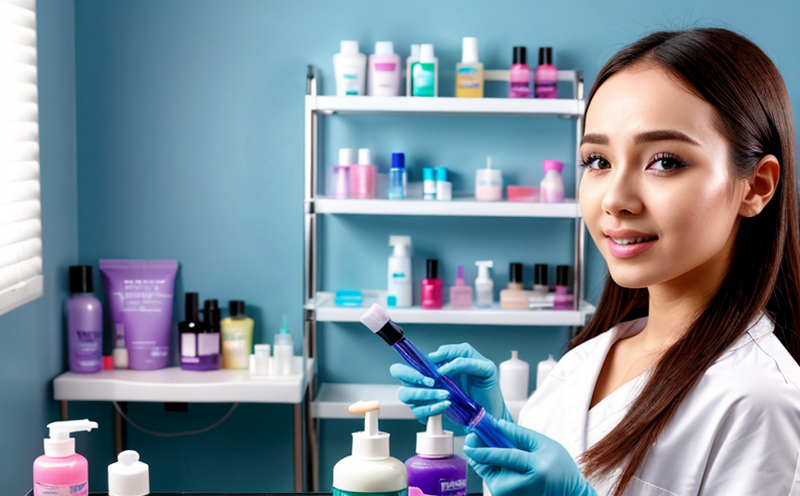ISO 11930 Preservative Efficacy (Challenge Test) in Cosmetics
The ISO 11930 preservative efficacy test, also known as the challenge test, is a critical procedure for ensuring that cosmetic products are safe and effective. This test evaluates whether a preservative can inhibit microbial growth effectively under real-world conditions. It ensures that the product remains stable throughout its shelf life, thereby protecting consumers from potential health risks associated with contamination.
The test involves inoculating a cosmetic formulation with various microorganisms and then incubating it to observe any signs of growth or decomposition. The ISO 11930 standard provides detailed guidelines on how to conduct the challenge test, including the types of preservatives that can be tested and the specific steps for preparing the samples.
The process typically involves:
- Preparation of cosmetic formulations with and without the preservative under test.
- Inoculation of both samples with a defined set of microorganisms.
- Incubation at controlled temperature conditions to promote microbial growth.
- Regular monitoring for signs of microbial activity or spoilage.
- Analysis of the results to determine if the preservative is effective in inhibiting microbial growth.
This test is essential for quality assurance and compliance with international standards, including ISO 11930:2004. It ensures that cosmetic products meet stringent safety and efficacy requirements, thereby protecting consumers from potential health risks.
The challenge test is widely recognized in the cosmetics industry as a reliable method to assess preservative effectiveness. By conducting this test, manufacturers can ensure that their products are safe for use and comply with regulatory standards. This not only enhances consumer confidence but also helps in maintaining a positive brand image.
Why Choose This Test
The ISO 11930 preservative efficacy test is crucial for several reasons:
- Regulatory Compliance: It ensures that cosmetic products meet the stringent requirements set by international standards like ISO 11930.
- Safety Assurance: By inhibiting microbial growth, it protects consumers from potential health risks associated with contamination.
- Quality Control: It helps in maintaining consistent product quality and shelf life.
- Brand Reputation: Ensuring safety and efficacy enhances consumer trust and loyalty.
The test is particularly important for manufacturers who are committed to producing high-quality, safe cosmetic products. By choosing this test, they can ensure that their products meet the highest standards of quality and safety, thereby protecting consumers from potential health risks.
Customer Impact and Satisfaction
The ISO 11930 preservative efficacy test has a significant impact on customer satisfaction and brand reputation. By ensuring that cosmetic products are safe and effective, this test enhances consumer trust and confidence. This, in turn, leads to higher customer satisfaction and loyalty.
Manufacturers who choose this test can expect:
- Increased Consumer Trust: Safe and effective products build a positive reputation among consumers.
- Improved Brand Image: Compliance with international standards enhances brand perception.
- Higher Customer Retention: Satisfied customers are more likely to remain loyal to the brand.
In addition, the test helps in maintaining consistent product quality and shelf life, which is crucial for customer satisfaction. By ensuring that their products meet the highest standards of safety and efficacy, manufacturers can build a strong brand image and foster long-term customer relationships.
Environmental and Sustainability Contributions
The ISO 11930 preservative efficacy test contributes to environmental sustainability in several ways:
- Eco-friendly Formulations: By ensuring that cosmetic products are safe and effective, this test reduces the likelihood of product recalls and returns, which can lead to unnecessary waste.
- Resource Efficiency: The test helps in maintaining consistent product quality, reducing the need for rework or additional testing, thereby conserving resources.
- Reduced Consumer Risks: Safe products reduce the risk of consumer harm and associated healthcare costs, which can have broader environmental benefits by minimizing the strain on medical facilities.
The test also supports sustainable business practices by ensuring that cosmetic products meet high standards of safety and efficacy. This not only enhances brand reputation but also contributes to a more sustainable future for all stakeholders involved in the cosmetics industry.





